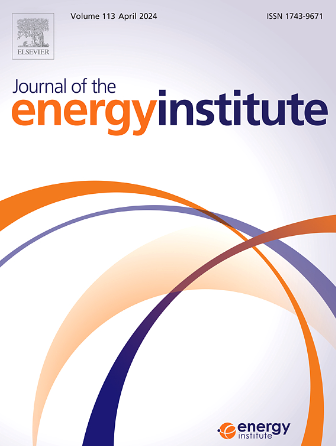减少二氧化碳排放:对二氧化碳捕获新兴技术/战略的回顾
IF 5.6
2区 工程技术
Q2 ENERGY & FUELS
引用次数: 0
摘要
气候变化带来的日益严峻的挑战促使全球努力减少大气中的二氧化碳水平。实现二氧化碳减排目标的一个关键策略是碳捕获和封存,它在未来几年向低碳能源系统过渡中起着关键作用。本文综述了碳捕集技术和强化策略的最新进展,重点介绍了减少人为CO2排放的方法。首先,讨论了现有的碳捕获策略,包括燃烧前捕获、燃烧后捕获和氧燃料燃烧捕获。随后,对每项战略的优缺点进行审查,然后进行比较评价,以评估其效率和实现零碳足迹的适用性。接下来,研究了不同的碳捕获技术,包括各种方法,如吸收、吸附、膜分离、低温分离和化学环。对每种方法进行了深入分析,详细说明了其机制和大规模部署的可行性。此外,对这些CO2捕集技术进行了全面的比较,重点讨论了它们的优势和限制。本文概述的战略和技术的整合为旨在驾驭复杂的碳捕获领域的学者、行业专家和政策制定者提供了有价值的参考。通过阐明不同捕获方法和技术的复杂性,本综述增加了正在进行的关于可持续实践和减少碳排放的迫切需要的讨论。本文章由计算机程序翻译,如有差异,请以英文原文为准。
Mitigating CO2 emissions: A review on emerging technologies/strategies for CO2 capture
The growing challenges posed by climate change have prompted global efforts to reduce atmospheric carbon dioxide (CO2) levels. One crucial strategy to meet CO2 emission reduction targets is carbon capture and sequestration, which plays a pivotal role in transitioning to low - carbon energy systems in the coming years. This paper summarizes the recent developments in carbon capture technologies and enhanced strategies, emphasizing mitigating anthropogenic CO2 emissions. Initially, the existing carbon capture strategies, including pre-combustion capture, post-combustion capture, and oxyfuel combustion capture, are discussed. Subsequently, an examination of the strengths and weaknesses of each strategy is provided, followed by a comparative evaluation to assess their efficiencies and suitability for achieving zero carbon footprints. Next, different carbon capture techniques are examined, encompassing various methods such as absorption, adsorption, membrane separation, cryogenic separation, and chemical looping. Each method is thoroughly analyzed, detailing its mechanisms and feasibility for large-scale deployment. Additionally, a comprehensive comparison of these CO2 capture technologies is provided, focusing on their advantages and constraints. The integration of strategies and technologies outlined in this paper serves as a valuable reference for scholars, industry experts, and policymakers, aiming to navigate the intricate realm of carbon capture. By elucidating the intricacies of different capture methods and technologies, this review adds to the ongoing discussion on sustainable practices and the urgent need to mitigate carbon emissions.
求助全文
通过发布文献求助,成功后即可免费获取论文全文。
去求助
来源期刊

Journal of The Energy Institute
工程技术-能源与燃料
CiteScore
10.60
自引率
5.30%
发文量
166
审稿时长
16 days
期刊介绍:
The Journal of the Energy Institute provides peer reviewed coverage of original high quality research on energy, engineering and technology.The coverage is broad and the main areas of interest include:
Combustion engineering and associated technologies; process heating; power generation; engines and propulsion; emissions and environmental pollution control; clean coal technologies; carbon abatement technologies
Emissions and environmental pollution control; safety and hazards;
Clean coal technologies; carbon abatement technologies, including carbon capture and storage, CCS;
Petroleum engineering and fuel quality, including storage and transport
Alternative energy sources; biomass utilisation and biomass conversion technologies; energy from waste, incineration and recycling
Energy conversion, energy recovery and energy efficiency; space heating, fuel cells, heat pumps and cooling systems
Energy storage
The journal''s coverage reflects changes in energy technology that result from the transition to more efficient energy production and end use together with reduced carbon emission.
 求助内容:
求助内容: 应助结果提醒方式:
应助结果提醒方式:


